Studio tour: Feeder's Grant Nicholas reveals his guitar and recording setup
Plus insight into new album All Bright Electric
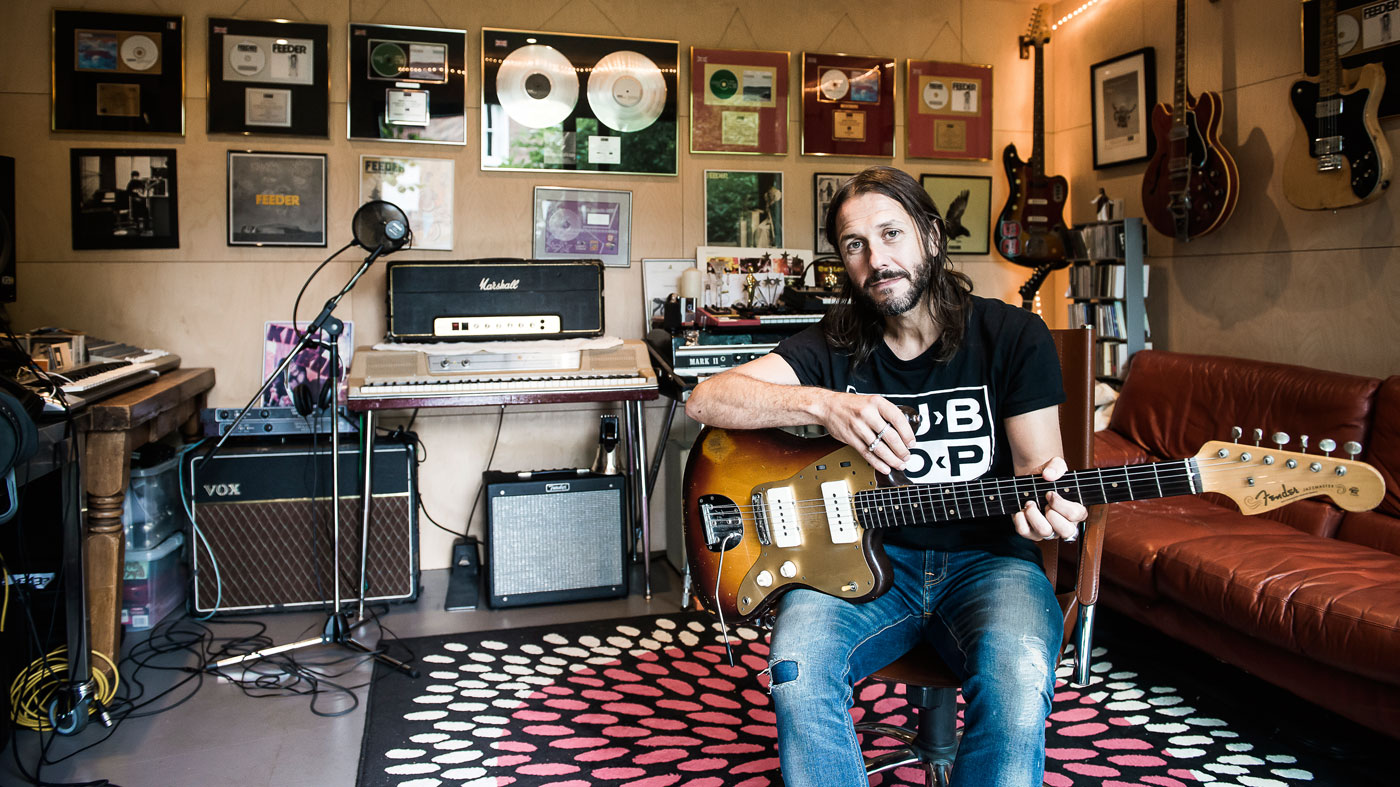
Introduction
As Feeder return all fuzz blazing with a new album in time for their debut EP’s 20th anniversary, we visit Grant Nicholas in his home studio to hear some valuable recording and gear wisdom from a British rock hero
I still feel excited about it. How can you not?
“Music just brings a spark to me,” smiles Grant Nicholas. “I still feel excited about it. How can you not?” We’re certainly standing in an exciting space - a line of vintage guitars from Feeder history hang on one wall, AC30, Fender Hot Rod Deluxe, Blues Jr and battered 70s Marshall JMP amps sit proudly at the back.
There’s a recording rig on one side, and a collection of pedals on the floor, including no less than three Tone Benders. There are framed gold discs and album covers dotted around, it’s got leather seats… there’s probably a CD player, too, ahem.
But Grant Nicholas’ cozy Treehouse studio in the garden of his suburban London home has become more than the writing haven he envisioned; it’s evolved into a creative HQ where his solo releases, Yorktown Heights and Black Clouds, took shape, and where he wrote, recorded and co-produced much of Feeder’s storming new album, All Bright Electric.
We took a snoop around inside, and also into the mind of a musician who has kept his creative mojo firing for two decades since debut EP Swim was released in 1996.
Don't Miss
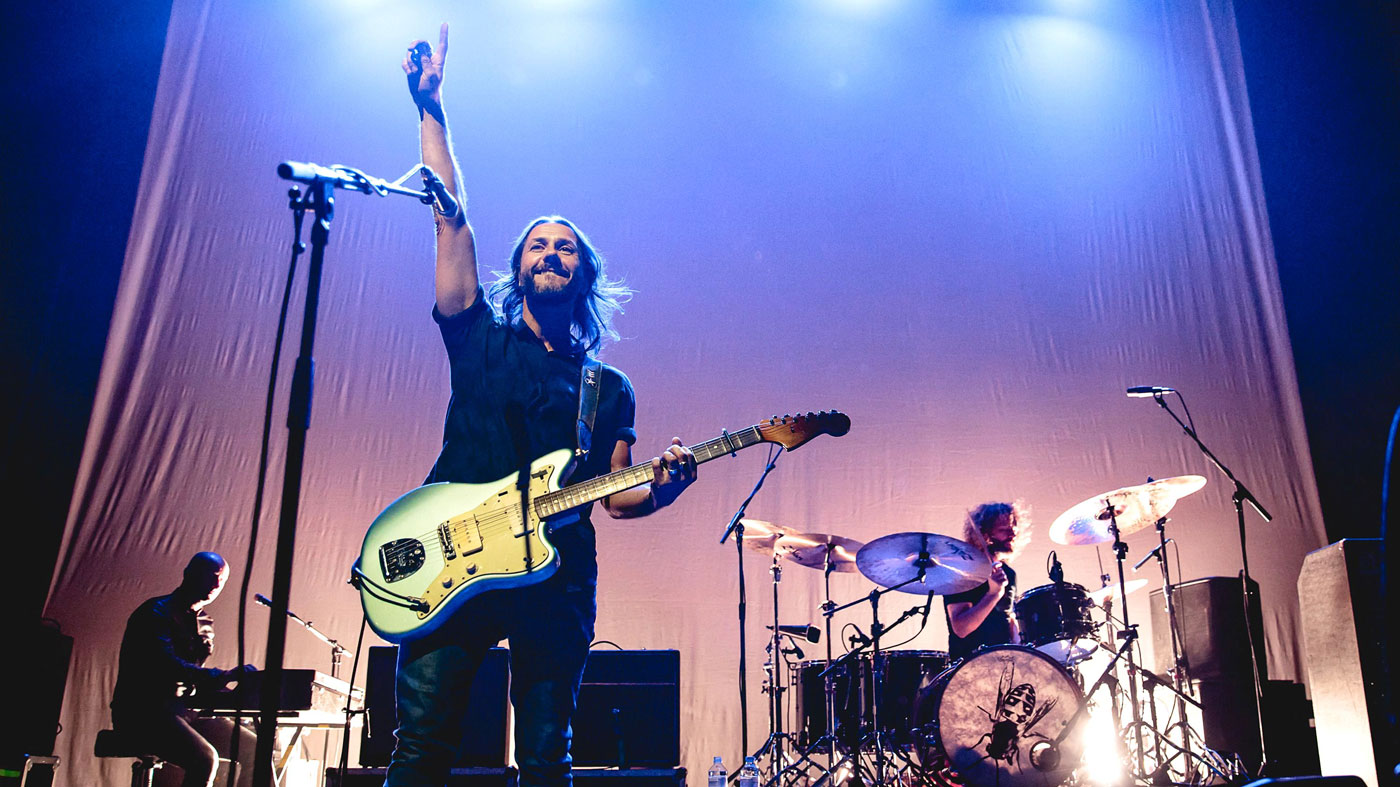
New headroom
A home studio has changed Grant’s approach to tracking guitars
“I built it just as a working space first of all, it wasn’t meant to be a studio. I could make it a lot more state of the art but I like the fact it’s quite rock ’n’ roll and relaxed in here as well.
My live rig is the Deluxe and the JMI, so I pretty much record my main sound with my live rig
“Obviously I can’t do drums in here but you can do pretty much anything else. I’ve had to work out different ways, not having loud amps all the time. But I really don’t think it’s affected my sound at all, I think I’ve got some better sounds on this record just by trying different things out.
“You really don’t need loud amps to record. You do get a certain amount of air with them so what I’ve done with some of the tracks on the album is we’ve taken DIs as well which I don’t normally do.
“We did do a bit of reamping, putting it back through the Marshall and my main rig which is either a Vox or a JMI, and I either use a Deluxe or some sort of Fender combo, like a Twin, or whatever is available.
“My live rig is the Deluxe and the JMI, so I pretty much record my main sound with my live rig and then I normally do some main rhythms and sometimes some overdubs using that old Marshall head that’s been on every Feeder record. And we fed the bass back through that on virtually every track as well.”
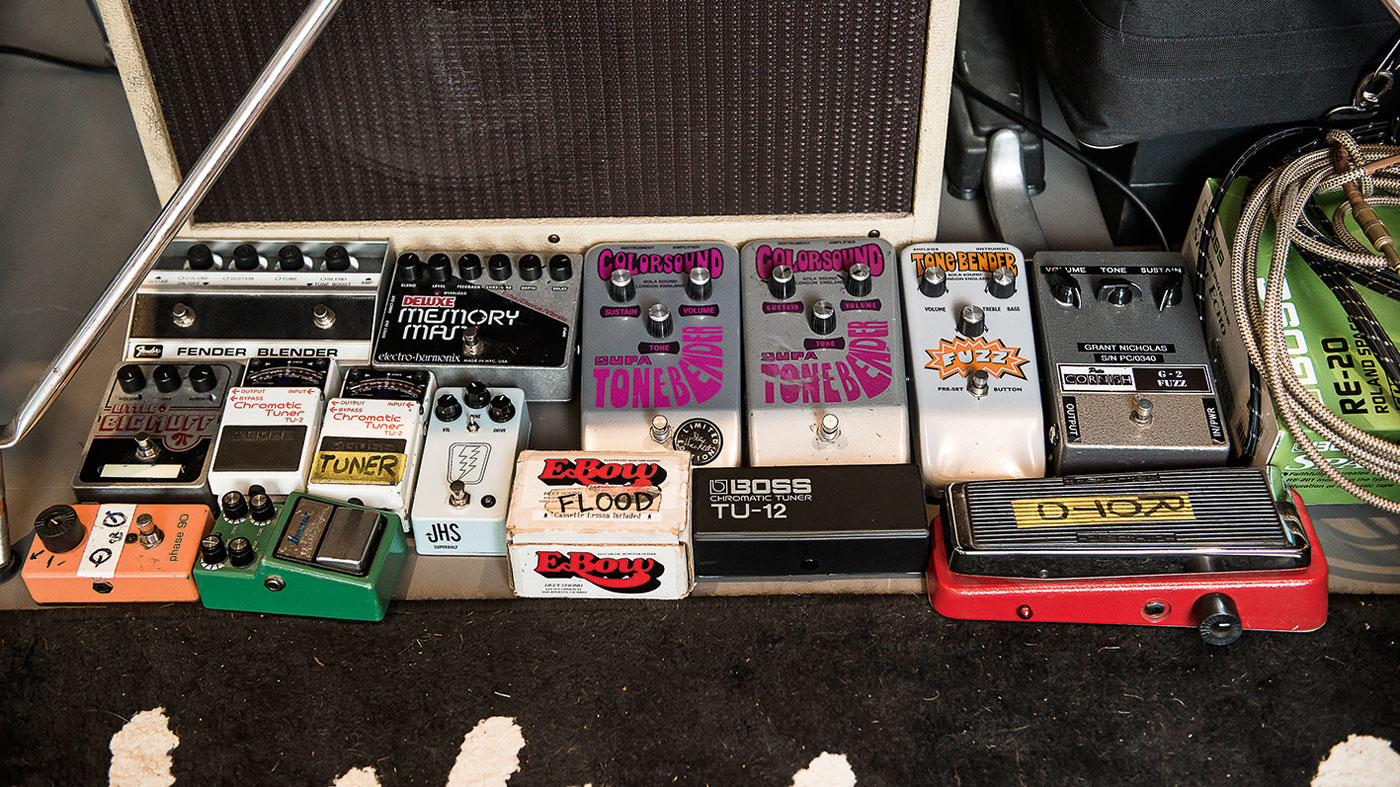
Comfort in fuzz
Feeder are moving forwards, but Grant’s still got his 90s approach to pedals
“The guitar tone is a massive part of my personality. I’m not a technical player but I know what I want with the guitar sound. I used a lot of the Pete Cornish pedal - that’s a really good fuzz box, just a really good all-rounder.
If you see me when I’m recording guitars there’s pedals everywhere, leads everywhere. And I like to work that way
“Even the Ibanez Turbo Tube Screamer, that’s a fantastic pedal and I use that a lot. I just find the modes are really good so if you want a scratchy clean sound with a bit of drive that is really good. And I use the Fender Blender - that’s pretty old school! Loads of Memory Man too, that’s quite an important pedal for me. But it’s all pretty simple.
“If you see me when I’m recording guitars there’s pedals everywhere, leads everywhere. And I like to work that way. When I’m recording I want to be free, that’s why I don’t even use my live pedal set-up when I’m recording.
“Okay, I’m lucky enough to have four Tone Benders and they all sound a bit different, but it’s usually the one that’s got the battery working that I’ll pick! It’s as simple as that sometimes.”
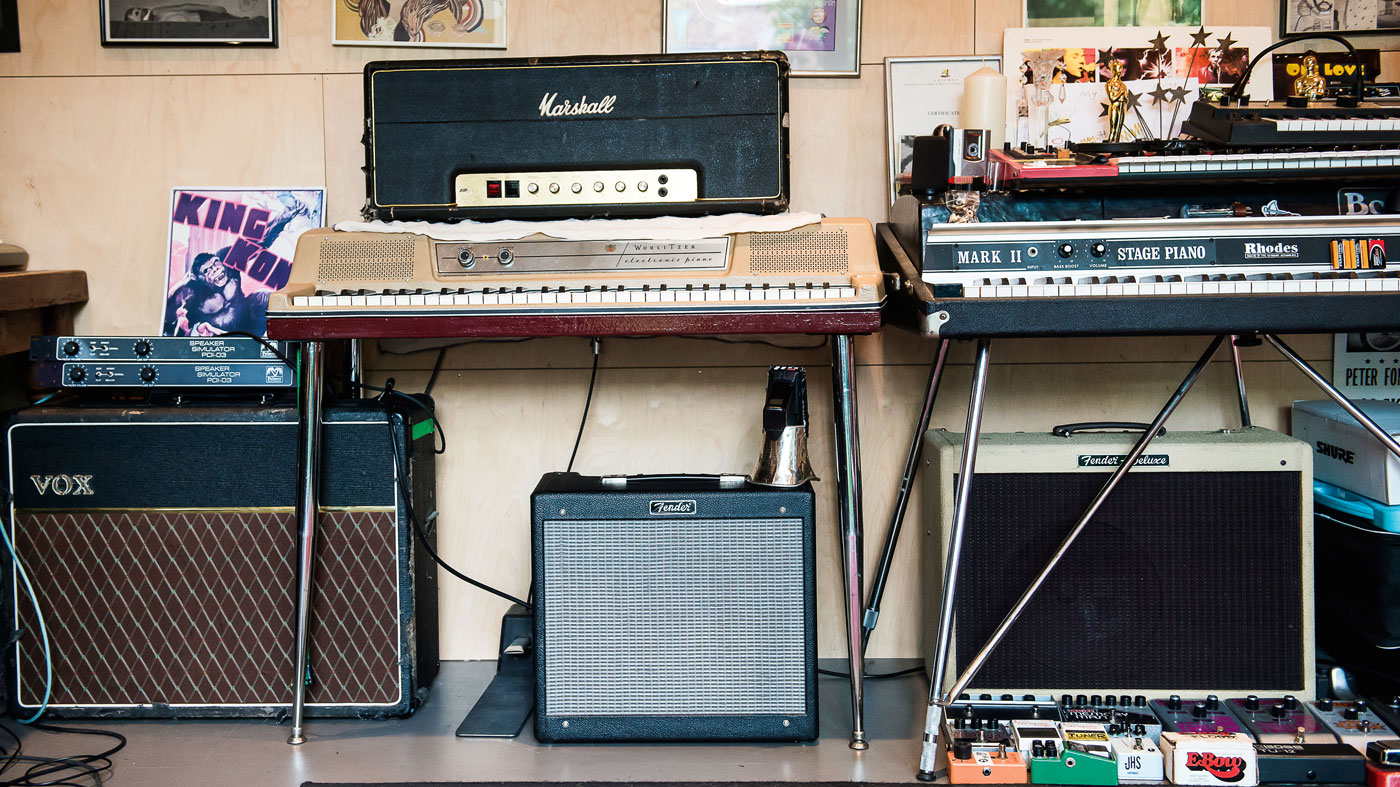
Fender blender
Combining different amps is a vital component of Feeder’s sound
“I’m not into a very aggressive guitar sound, I like the sound to be quite fat, almost subby. I think with the recording it’s just getting the guitars to sound a bit different to everything else that’s around at the moment.
I’m not a fan of the typical modern rock sound that you hear on radio... I find it very formulated
“There’s a few that are doing different things like Band Of Skulls and even Royal Blood, because they touch more on the old-school 90s sound, the time when we started out. I’ve always liked that kind of sound, whether it be Smashing Pumpkins or Dinosaur Jr. I’m not a fan of the typical modern rock sound that you hear on radio. It’s just not what I’m into, personally. It sounds great, it’s powerful when Boogies slam in, but I find it very formulated.
I know it sounds a bit harsh but it’s almost like that conveyer belt of rock sound. It’s a perfect guitar sound, everything’s perfect but I don’t think that’s Feeder. But it’s getting a good source sound, that’s really important. Don’t worry about having stacks of gear because you often don’t need it.
“I just like Voxes because they have quite a dark tone to them and I quite like that. I like the blend of that mid dark tone you get with a Vox or JMI blended with the more top and bottom you get from a Fender, and I find that fills the hole. It’s always been that combination that has worked for me and kind of been the Feeder guitar sound really.”

On song
Don’t always record vocals last…
“I do a lot of overdub parts, but some of them are quite subtle. I always make sure that without the parts the track will still hold together as a three-piece band. Of course you’re going to miss that little cool line here and there.
You can have too many parts. So what I did on this record is I made sure I had the vocals on early
“For this album I did a lot of parts on the Wurlitzer keyboard and then tracked some with guitar and vice versa. It gives it a really interesting sound. With overdubs, I try to have fun with it. There’s always a danger - for me included, even after doing it for this long - that you need to find what are really the key elements because if you have one too many it’s confusing.
“It might be that one of those parts is the best part ever and as soon as you put the vocal on, you barely hear it. You can have too many parts. So what I did on this record is I made sure I had the vocals on the tracks quite early, which I don’t normally do. I started doing it on the solo record so I didn’t leave all the vocals at the end like singers always do. Then I could live with the vocal and I knew what the track needed.
“It didn’t need those 50 guitar parts and it needed that one, that one and that one and they needed to be more atmospheric. So a lot of the guitar parts I did are very much like that. When you take them off you miss them but they’re not distracting you too much.
“If I do the next Feeder record I’m going to try and have all the vocals, or at least a demo vocal, on there. It makes a massive difference. And if I was going to produce another band I wouldn’t want to leave it to the end. You have to be really disciplined, because it’s very hard once you get into the guitar world to stop.”
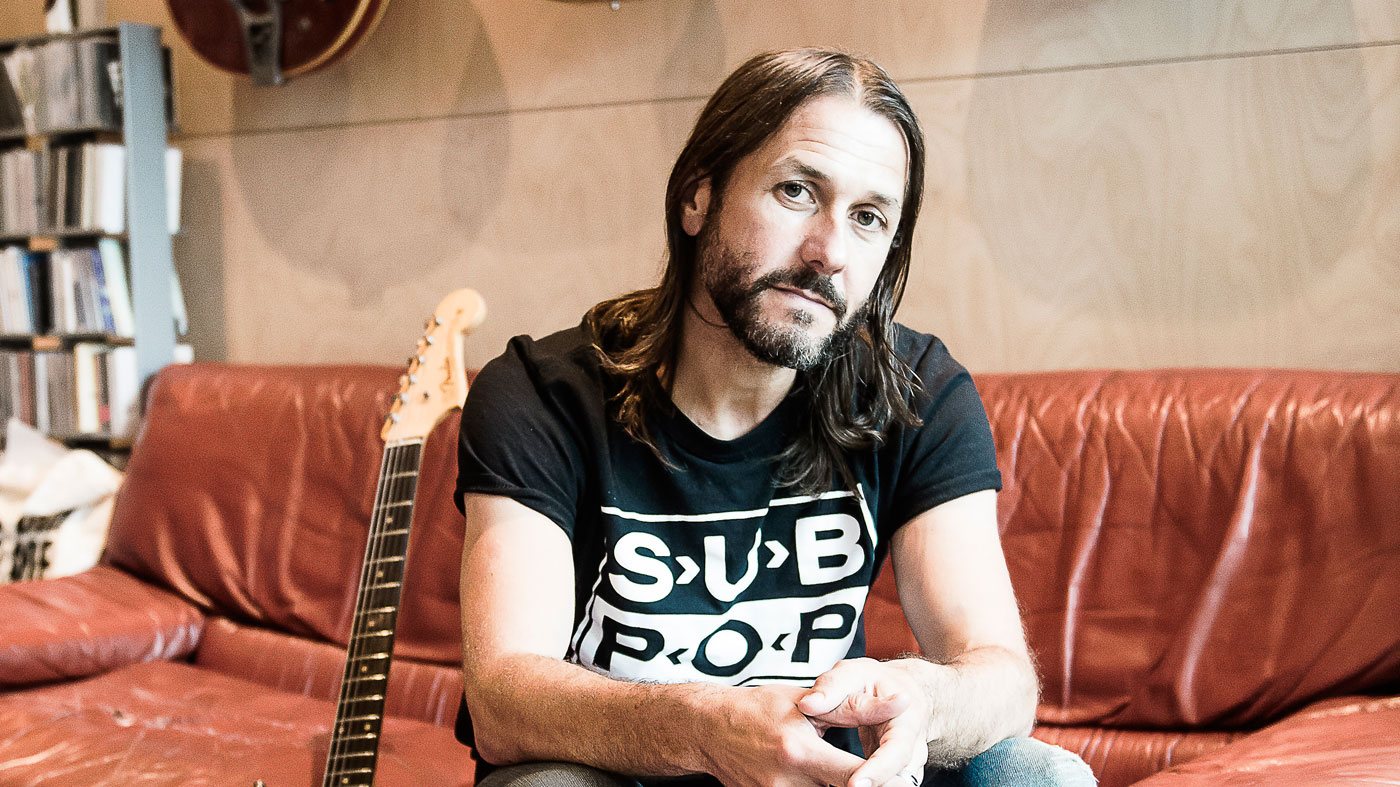
Strung out
Who says that you can’t use old strings for recording?
The last time I changed the strings on my Jazzmaster was for the last Feeder album four or five years ago
“This will shock people reading this, but I didn’t want to change the guitar strings on my ’59 Jazzmaster because I loved the sound. The last time I changed the strings was when I was recording the last Feeder album [Generation Freakshow] four or five years ago. It’s so dead [plays Jazzmaster] but I love it. It gives it that real woody organic sound that I love. Even for clean.
“I’m not really into that super bright sound. So you don’t need new strings on for recording, and I hate the sound of acoustics with new strings. Especially for fingerpicking. Having said that, if you want a real rocking sound with a bit of edge to it, yes. But rather than change the strings on my ’59 I’d just use another Jazzmaster if I wanted that.
“Even with bass I think that the strings have been on there for a while - Taka [Hirose, bass] hates the sound of new bass strings. Unless you’re going for a real clanky sound, Taka prefers the organic sound for recording. In the 70s I don’t think they changed their strings. I don’t think they could afford to, they used to boil them, didn’t they?!”
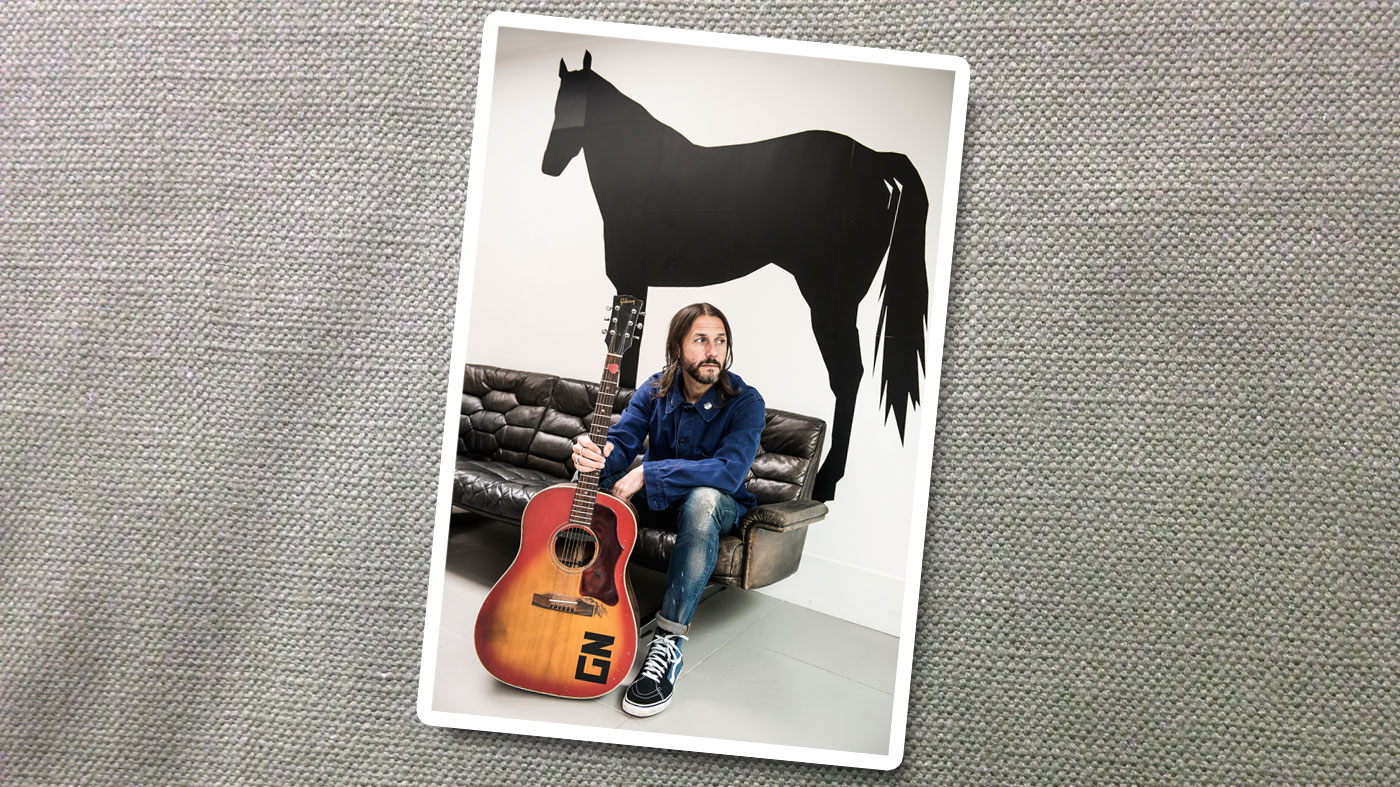
Be cooperative
If you’re a home recordist, it’s good to have someone to collaborate with
It’s good to work with creative people, it keeps you inspired but at the end of the day I have an overall vision for it
“If I was doing it on my own I’d still be doing the album now, I’d probably be on the first song! I find that being involved in the production side of it, thinking about all the other stuff, I’m not good enough on that and it would hold me back. And also, I’d find it really boring. Even if that person is just there pushing buttons it’s nice to ask, ‘What do you reckon?’
“And that’s why I ended up doing co-production with Tim [Roe], it was great to have him here and I think the engineer becomes part of the band if you click with them. It was never, ‘Can you co-produce the record?’ It was that we worked so well together, credit where it’s due.
“Tim’s quite a musical guy as well, not necessarily a songwriter guy. He’s got some good ideas and he does a lot of remixing work, so he’s really good at getting drum loops and that sort of stuff. It’s good to work with creative people, it keeps you inspired but at the end of the day I have an overall vision for it, it’s finding people that can help you get there.”
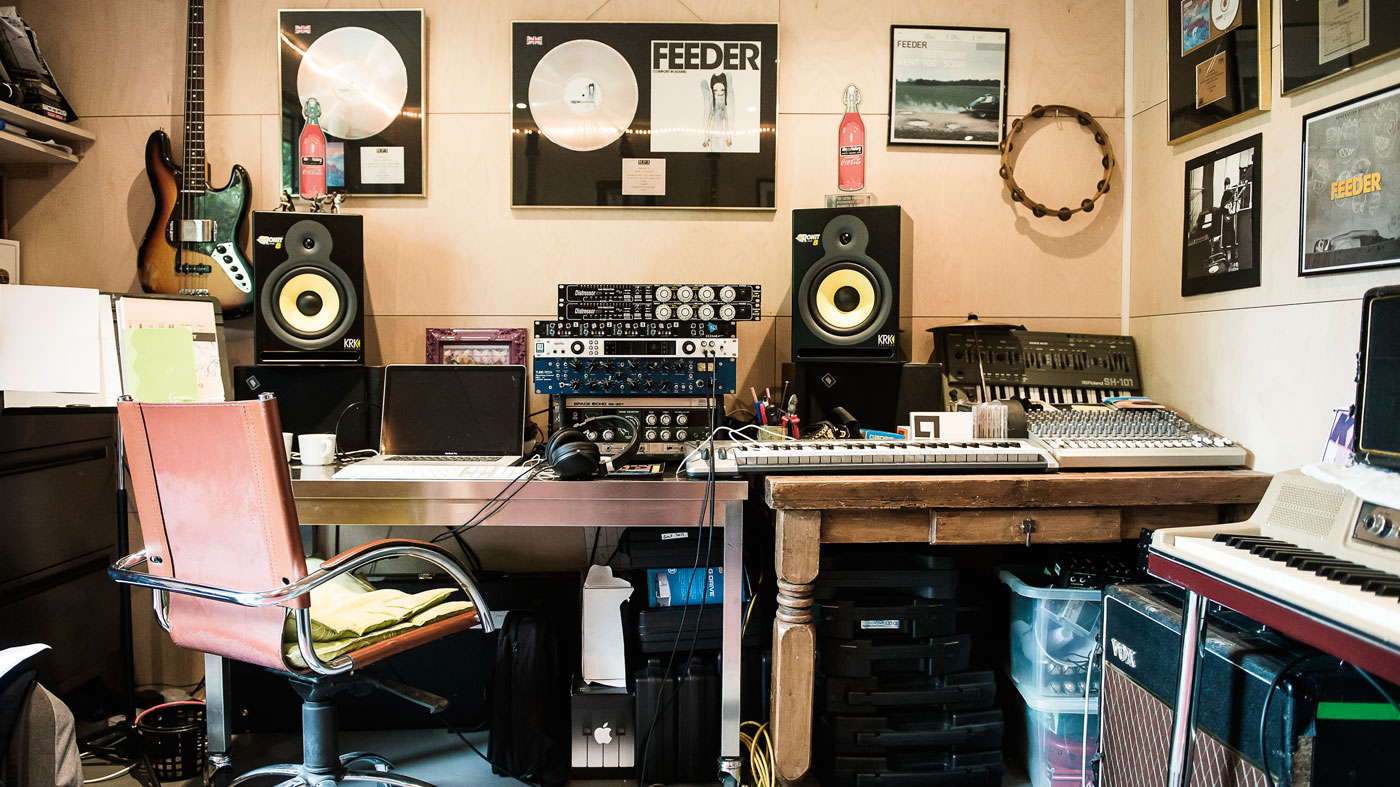
Remote control
Grant has found bandmates don’t have to be in the same place to record
A lot of bands work [remotely], especially a lot of bigger bands who live all over the world
“I put down a lot of bass and send it to Taka [Hirose, bassist] and some of the times he loves the bass parts and just does that in his style. Because he wasn’t here a lot of the time so I was sending him tracks and he was doing stuff at home.
“He’s got a rig at home, then he’d send it back to me and I’d re-amp it. So we did a lot of bass like that on this record because he lives up north. It was quite a fun way of doing it. We’d talk about it on the phone, then I’d send him a track and he came down here as well so we did some bass in the studio up at Angelic [Studios, Northamptonshire].
“Ideally he would have been here every day with us but everyone has their own lives. He doesn’t live in London anymore. He doesn’t need to be here every day. Maybe it’s good to have that, maybe him not hearing it all day every day has given him a fresh ear on it all. It’s a pretty interesting way of working but that seems to be the way a lot of bands work, especially a lot of bigger bands who live all over the world.”
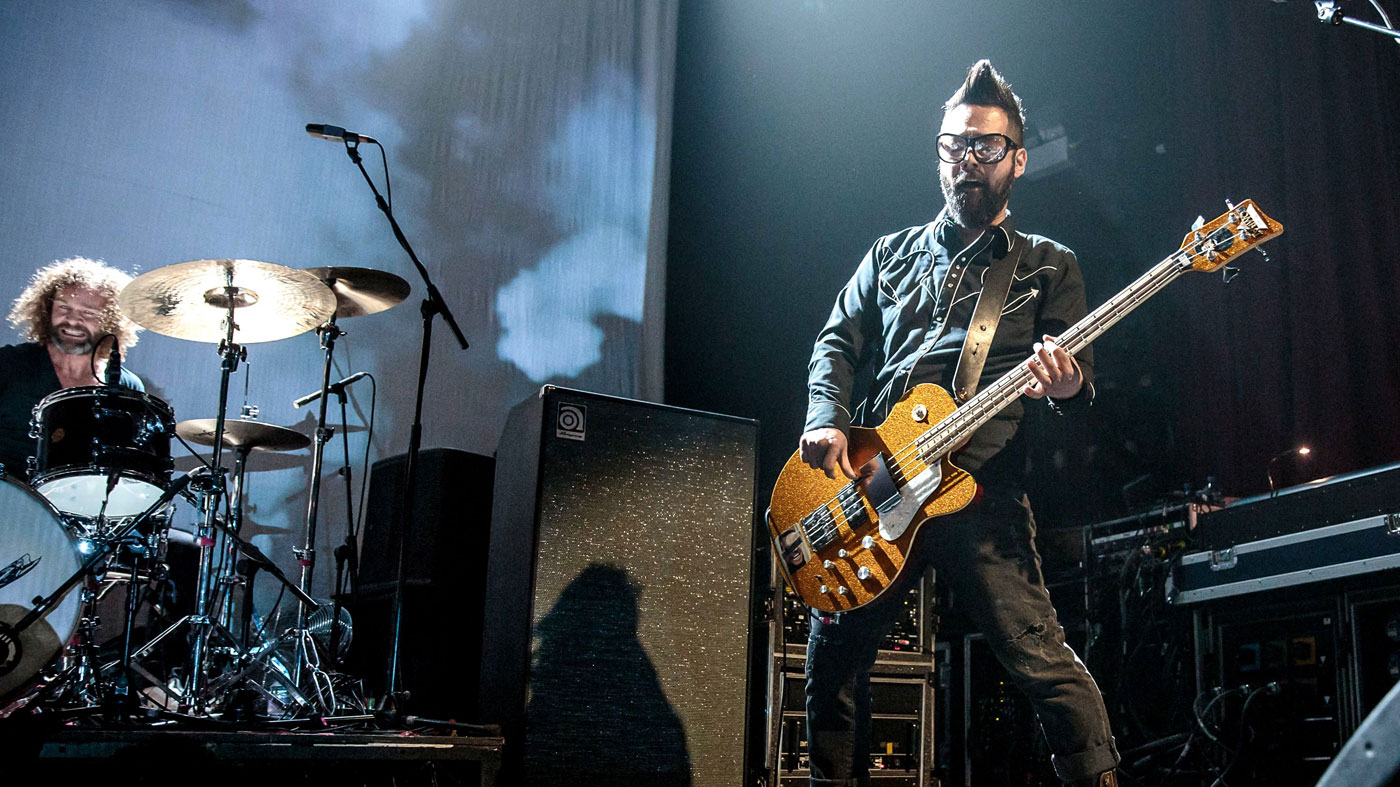
Three's company
Playing in a trio can be character building
“We’re not always a three-piece live but the chemistry is always a three-piece. When we rehearse for a tour it’s always the three of us and I love playing as a three-piece, even though you can’t do everything.
Being in a trio is a good way of finding your sound because in a three-piece band something has to fill that hole
“I think it’s a good way of finding your sound because in a three-piece band something has to fill that hole sometimes. So you’ve either got a bass player who has the heaviest fuzzy bass sound that will fill a gap in the guitar solo, or you do it with the guitar.
“You just go for this massive sound with the delays going and this big wall of noise. A trio does challenge you a little bit. In some ways it can be a good way of getting a style of your own.
“Some of my favourite bands have two or three guitarists in them but a three-piece is a good starting point, it especially was for us. It restricts you in some ways but it makes you work a lot harder. I think it’s that challenge of trying to do something in a very small set-up. There’s a certain chemistry you get with a three-piece band that’s unlike any other setup. It’s intense but exciting.”
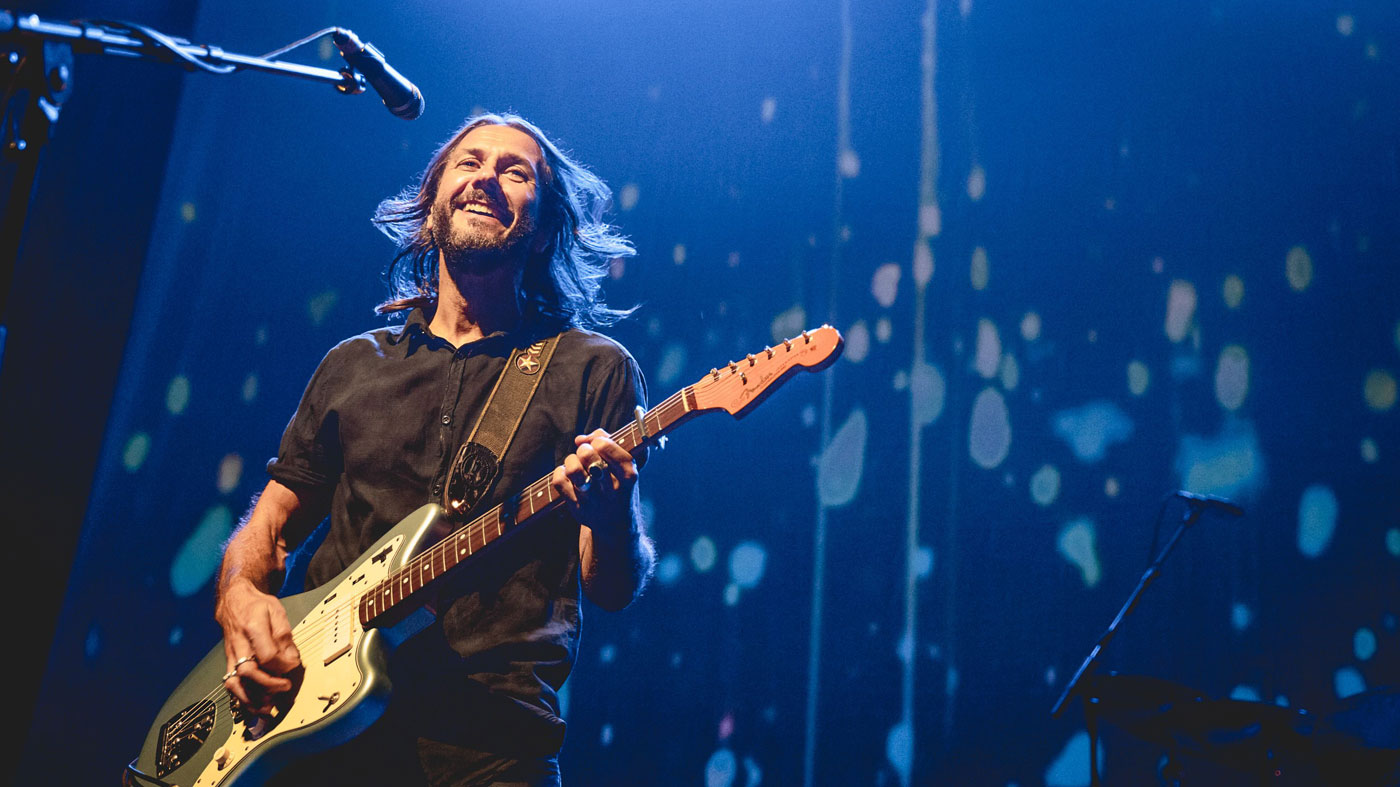
Come back brighter
Feeder taking a four-year break is going to reap rewards
“Going away was so important. I think this break and doing other projects has been really good for Feeder, and certainly good for my headspace. I think it’s made us a better band, I honestly believe that.
Have we got it right every time? Of course we haven’t, but we’ve always tried to move forwards
“Even though we’re no spring chickens, the weird thing about being in a band is almost like being Peter Pan. Whether people like Feeder or not, or they like my songwriting, I don’t we can ever be accused of not writing the best music we can. Have we got it right every time? Of course we haven’t, but we’ve always tried to move forwards and never really tried to live off the past hits.
“And some bands do get to a point where something goes wrong or dries up or something - that drive - and it just feels it’s gone its course… fine. I’m not saying there’s anything wrong with that but I don’t want to be in that kind of band. And I don’t have any burning desire to rush back and do another solo record.
“If a time frame comes up and it doesn’t get in the way of Feeder plans I may do a little bit and Taka can do a bit in Japan with his side project. If that happens it happens. But at the moment Feeder is my priority. I’m back in Feeder mode!”
All Bright Electric is out now on Cooking Vinyl.

The guitars
1967 Gibson ES-340
“This was not used on this album, but features in the Feeling A Moment video. It was also used for the Pushing The Senses [2005] album recording sessions.”
1959 Fender Jazzmaster
“This is all-original. I did a lot of almost like Duane Eddy-style guitar overdubs, a lot of rockabilly sounds incorporated among the big guitars. I did most of it with the Jazzmaster with a tremolo arm.”
1964 Guild M-20
“This was the main acoustic used on the album. It was also used a lot on [solo records] Yorktown Heights and Black Clouds. Its one of my favourite acoustics and records so well.”
1972 Fender Telecaster Deluxe
“I bought this guitar before we were signed and it always sounded great. It was used on [1997 debut] Polythene, and our producer, Chris Sheldon, hassled me to sell it to him. I gave in, but bought it back off him fi ve years ago as I always regretted it. It’s back where it belongs.”
Don't Miss

Rob is the Reviews Editor for GuitarWorld.com and MusicRadar guitars, so spends most of his waking hours (and beyond) thinking about and trying the latest gear while making sure our reviews team is giving you thorough and honest tests of it. He's worked for guitar mags and sites as a writer and editor for nearly 20 years but still winces at the thought of restringing anything with a Floyd Rose.

